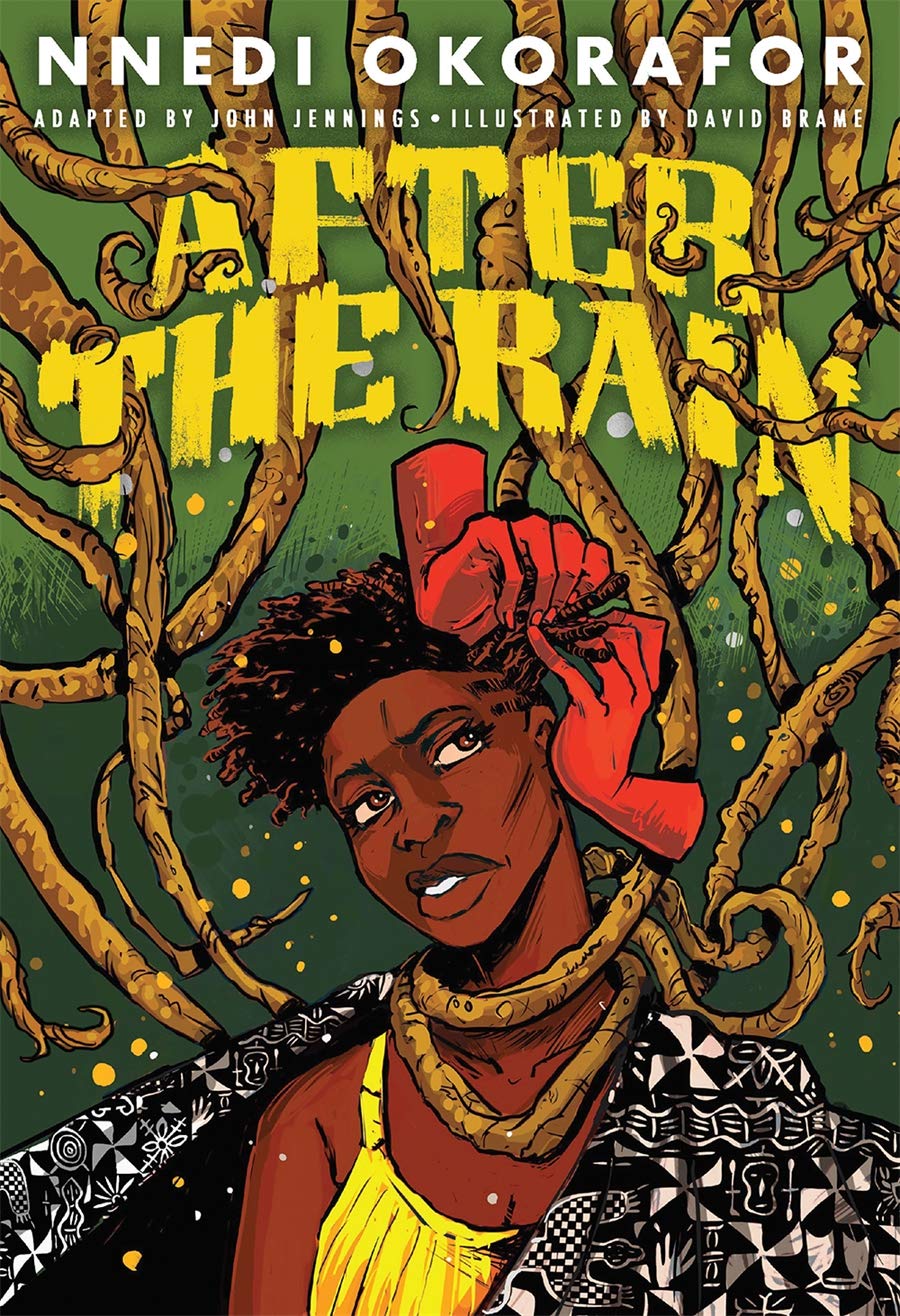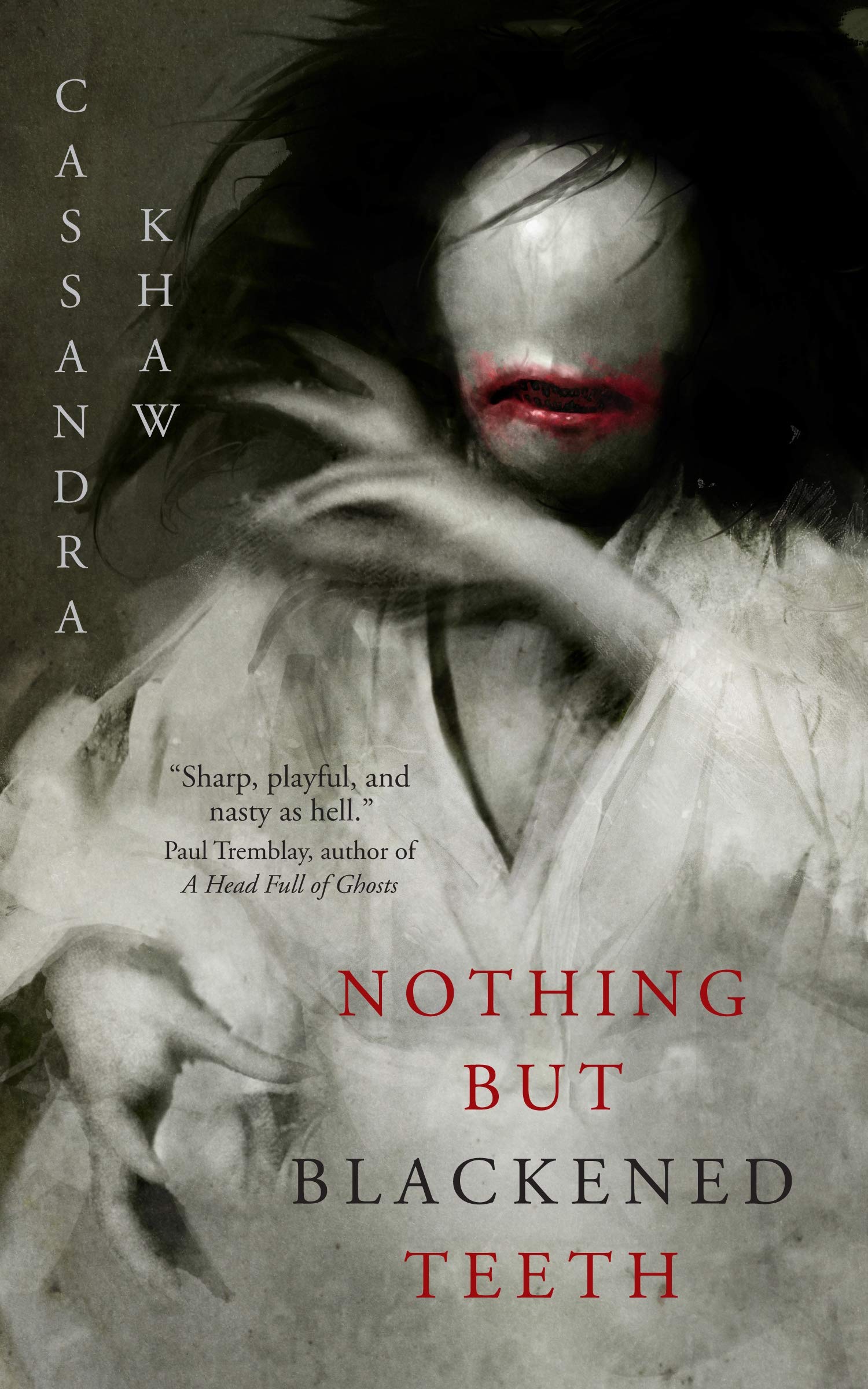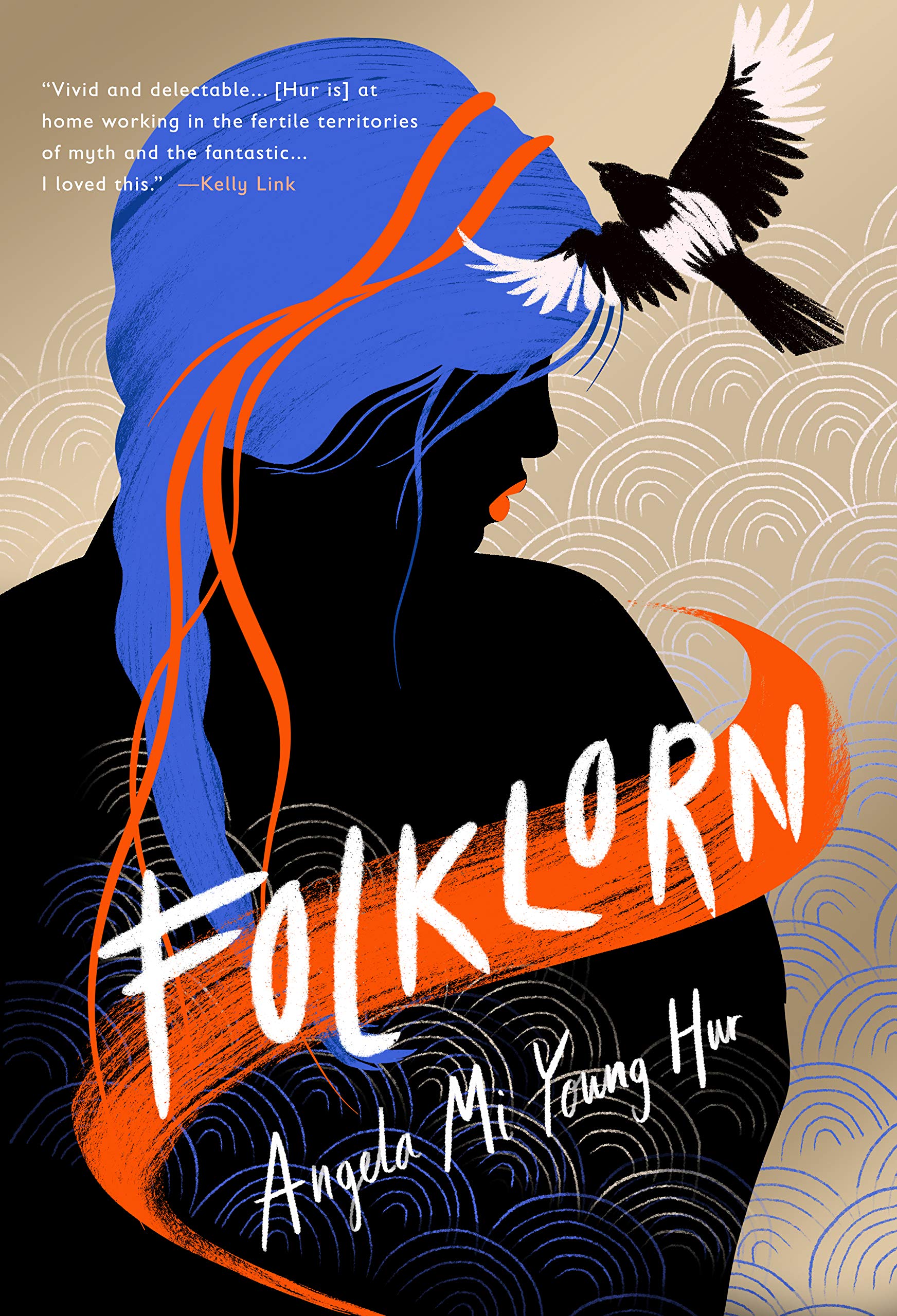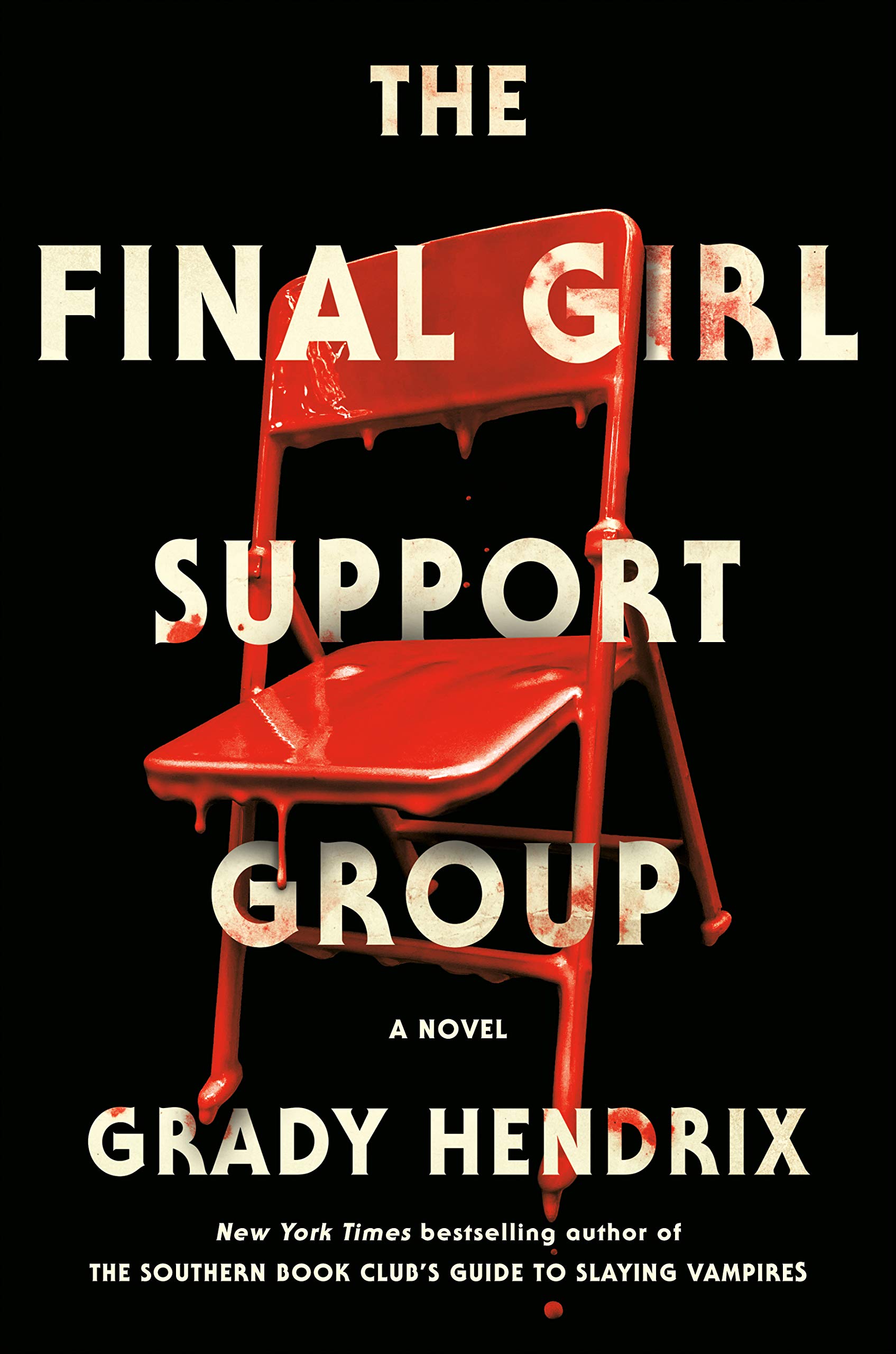Table of Contents Show
WonderCon@Home temporarily became a conference for monsters with their panel “Monsters We Have Met and Been” on March 27th. These horror and speculative fiction writers and illustrators are monster experts here to share their definition of and relationships of monsterdom. Monsters are far more complex than something that scares the readers or viewers. Monsters are can allow the creators to explore complex themes and feelings; we have all met monsters and have been monsters in the eyes of others.
The Monster Experts
WonderCon@Home brought us an impressive team of monster experts with a wide experience in the horror and speculative fiction genre. This included the creators of After the Rain, a graphics novel adaption of Nnedi Okarafor’s short story “On The Road,” in which a Nigerian-American woman answers the door for a boy with a severe head wound. The story was adapted by John Jennings and illustrated by David Brame. John Jennings is a professor of Media and Cultural Studies at the University of California, Riverside. He has also worked on various books; his projects include the horror anthology Box of Bones, coffee table book Black Comix Returns, and graphic novel adaptations of Octavia Butler’s novels Kindred and Parable of the Sower.

David Brame is an illustrator who has worked on various comics. He is the cover illustrator for Necromancer Bill, Baaaad Muthaz, Medisin, and The Trip. He is currently working on Blanco Volume One: The Truth Shall Set You Free, a 64 page black and white graphic novel. It is described as an anthropomorphic post-apocalyptic sword and sorcery world. There was also the Korean-American author Angela Mi Young Hur. She debuted with the novel The Queens of K-Town in 2007. This coming-of-age story explores the life of Cora at the ate age of 16 and in her late 20s. Her next novel Folklorn is scheduled for release on April 27th, 2021. The story follows Elsa Park, a particle physicist, who is at the top of her game when her childhood imaginary friend returns to haunt her.
Cassandra Khaw, a Malaysian writer who has worked on narrative games and novels, also attended. Their games include Falcon Age, Captain Forever trilogy, Wasteland 3, Fallen London, Sunless Skies, Where the Water Tastes Like Wine, She Remembered Caterpillars, and The Silence Under Your Bed. They have also written several stories, including their short fiction series Born to the Blade and Person Non-Grata. Their most recent Nothing But Blackened Teeth scheduled for release on October 19, 2021, a creepy haunted house tale for anyone looking for a Halloween scare.

There was also writer Clay Mcleod Chapman who has worked on several films, comics, and books, including the ongoing Marvel series Scream: Curse of Carnage and the short film late bloomer. His upcoming novel Whisper Down the Lane, a psychological horror inspired by the Satanic Panic of the 80s, was released April 6, 2021. There is also Grady Hendrix, a horror writer who has written short stories, novels, and screenplays. His novels include My Best Friend’s Exorcism, a story of friendship and exorcisms, and Horrorstör, the only novel about a haunted Scandinavian furniture store you’ll ever need. His newest novel, The Final Girl Support Group, is scheduled to release July 13, 2021.
Race, Culture, And Horror
The panelists were asked to define monsters and their relationship with the concept of monsters. This opened the door to conversations about race and culture. The people of color participating grew up with a relationship to horror and monsters shaped by specific folklore, racism, and gender violence. Their writing and arts have also become outlets to explore real-life horrors.
Intersectional View Of Monsters
The concept of a monster is shaped by a person’s experiences, which are shaped by the many aspects that build up their identity. Someone’s cultural background the place they grew can determine what urban legends and folklore they were exposed to, the way certain stories are told, or how people interact with the supernatural people tell. For example, Cassandra Khaw explained that they noticed in many Western countries, ghosts are treated as anomalies, both in fiction and real life. This contrasted against their experiences growing up in Malaysia, where ghosts and spirits were common in real life. They knew family members and family friends who moved because of spirits in their home; a haunted house wasn’t a plot of a story nor an anomaly. Additionally, they didn’t grow up thinking of spirits as the odds one out or the home intruder. The spirits had been there first; humans came along later.

Jennings and Brame also explained how their experiences of black men shaped their view of monsters and horror. Both grew up in The South, a childhood that included beliefs related to jujuism and many incidences of racial violence. John explained that he grew up with a grandmother who shared stories of supernatural things that lived in the forest. He also grew up hearing stories of black boys and men going missing. Brame states that monsters can become avatars for trauma; horror can be used to confront painful, horrifying realities.
Additionally, Brame explained that Black folk are often seen as monsters because of racism; how you define monsters changes radically when you have been treated as something people need to protect themselves from. This treatment is often why many BIPOC often see themselves in fictional monsters and sympathize with them over what is usually a white protagonist. Gendered experiences can also shape one’s perspective of monsters. Young Hur’s approach to Korean mythology is grounded in her experiences as a woman; she approaches the mythology by focusing on the gender-based violence that occurs in many of the stories. Women are often tossed into the ocean, sacrificed without a second thought. As an author, she decided to explore how these women could become monsters as they lose themselves in revenge. Their disposability as women transforms them into monsters you might not root for but can’t entirely blame them either. Sometimes monsters are just doing what they need to do to survive.
Exploring Trauma Through Horror
The panelist also explored how horror and speculative fiction can be used to explore societal issues such as racism, gender-based violence, and domestic abuse. Brame stated that fiction gives the creator space to put all the negative emotions produced by traumatic events and shape them into a piece of art. Brame shares his own experiences as a black creator. He has lived in red states; he spent a lot of his life surrounded by terror and potential danger; existing on a daily basis was often terrifying. He has created fantasies around these real fears.

Writing and creating horror can also give creators distance from certain social issues and give them the space to make sense of them. As Jennings stated, mythologies of the past were created so humans could make sense of the terrible things that happened to them. Today horror can be used to explore issues and make sense of them. It’s a way to give people different levels of language for things that are extremely difficult to deal with. For example, in the book, Khaw explores the idea of sick systems through speculative fiction; what if abusers were reborn for years, perfecting their techniques of control, both psychological and physical.
Through their work, they have the space to explore abusive, controlling relationships. The panelists also shared the sentiment that horror can provide relief to trauma. When you read a piece that is inspired by real-life fears, fear you might relate to as a reader, there’s a sense of relief when you finish the book. The violence and terror have a definitive ending; that’s not the comfort we have in real life.
Who Are The Monsters You Have Met And Been?
If you have the time to watch the full discussion on monsters, horror, and trauma, the panel is still available at WonderCon@Home.It may be a good opportunity to start writing about monsters yourself, or you might decide to explore the horrors of the panelists and pick up their book or play their video game or watch their movies. Why not take some time to become a monster expert yourself?
